Quantum Computing
U.S. Cyber Command visit highlights UW–Madison’s leadership in cyber research and education
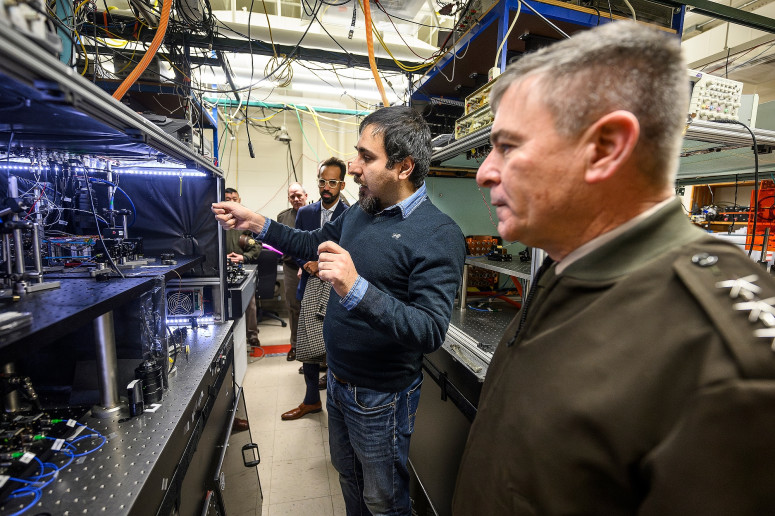
UW–Madison plays a leading role as a research and education partner for national cybersecurity. It reinforced this commitment recently by welcoming to campus a delegation from the United States Cyber Command (USCYBERCOM), which is responsible for the Department of Defense’s cyberspace capabilities.
Read the full article at: https://news.wisc.edu/u-s-cyber-command-visit-highlights-uw-madisons-leadership-in-cyber-research-and-education/Welcome, Prof. Britton Plourde!
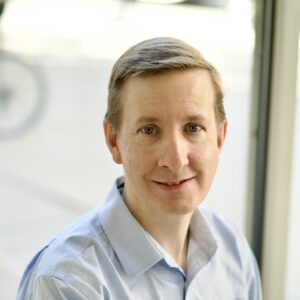
Condensed matter experimentalist Britton Plourde received his bachelor’s in physics and music performance from the University of Michigan. He then went to grad school at UIUC, earning a PhD in physics and a master’s in music performance. He completed a postdoc at UC-Berkeley, then began as an assistant professor of physics at Syracuse University in 2005, moving up the ranks to full professor there. In Fall 2024, Plourde joined the UW–Madison physics department as a full professor. He is joining the department on a half-time appointment; for the other half, he will be working at Qolab, a quantum computing startup company based in Madison.
Please give an overview of your research.
I work on superconducting quantum circuits. We make microfabricated superconducting circuits that have what are called Josephson tunnel junctions in them. And one of the biggest things we use these for is making qubits. We study all of the various physics related to how qubits work, what limits their performance, and ways to make them perform better so you could eventually build a practical, large-scale quantum computer. My research is similar to Robert McDermott’s and Roman Kuzmin’s.
What are the first one or two projects that you will have your group working on or continuing to work on when you arrive in Madison?
The company I’m working with, Qolab, is focused on building a quantum computer. My academic research lab at the university will be focused on fundamental physics related to operation of qubits, including the individual components of qubits like the Josephson junctions and to different processes that limit the performance of qubits. At the same time, the company is really focused on the technology of fabricating lots of qubits in a uniform, reproducible way and building them into a quantum computer.
In my group, a significant focus is going to be on understanding quasiparticles in superconducting qubits and how they impact the behavior of those qubits. Quasiparticles are electronic excitations above the superconducting ground state. The superconducting ground state is important because it doesn’t have any dissipation. But these quasiparticles are dissipative, and they can degrade the performance of a superconducting circuit. There are various things that can generate the quasiparticles, but one of them is radioactivity: background radiation from radioactive contaminants in the lab or from cosmic rays. My group is going to continue spending time on understanding the physics of those processes and coming up with ways to try to mitigate their effects to make qubits that are more immune to quasiparticles.
We’re also hoping to study quasiparticle physics in qubits for the completely opposite reason: instead of trying to mitigate the effects of quasiparticles to make better qubits, it’s to amplify the effects of quasiparticles to make better detectors, potentially to detect dark matter particles. Robert and I are co-principal investigators with some particle physics collaborators on two Department of Energy proposals for this work that we recently submitted. This work hasn’t been funded yet, but if it is, it is going to be a new and interesting research direction in both of our groups.
What attracted you to Madison and the university?
It’s a great department. I’ve known it for a long time because I collaborated with Robert almost as long as he’s been there. I’ve visited a lot over the years, and I like the area and the city. The university has made an impressive investment in quantum information science, and they’re a real leader in that area and have research strengths across multiple different qubit technologies, both experimentally and with a strong team of theorists working on different aspects of quantum information science and condensed matter. It’s really a powerhouse place, so I’m excited to join. University leadership has also been very supportive of the startup, they’re strongly encouraging of the entrepreneurial direction of faculty, and that’s not the case at a lot of other places.
What is your favorite element and/or elementary particle?
My favorite element has to be aluminum. That’s the superconductor we use the most. The same aluminum that you could use to wrap a hot dog at a baseball game to keep it warm, you can instead cool it down to below one degree Kelvin and it becomes a superconductor. And it makes great Josephson junctions for qubits.
What hobbies and interests do you have?
Well, I’m still a musician, I’m a flutist. I don’t really make money on it anymore, but I was a professional musician for a while. For the last three years of grad school, I had a job in a professional orchestra. I do still play occasionally, and I’ll have to see how much time I have when we get to Madison. My wife is a professional musician. She’s an oboist and she’ll be working part time in the School of Music developing a new monthly recital series.
Welcome, Professor Ben Woods!
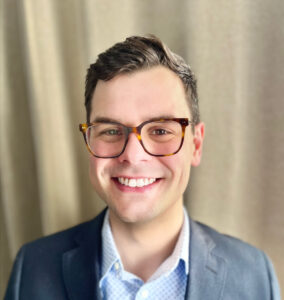
Condensed matter theorist Ben Woods joined the department as an assistant professor this fall. Originally from a small town in North Dakota, Woods studied physics at the University of North Dakota and earned a PhD in physics from West Virginia University. He first came to UW–Madison for a postdoc with Mark Friesen in 2021, and now moves into his faculty role.
Please give an overview of your research.
I primarily work in two main areas of condensed matter theory and quantum information science. The first area is the theory of semiconductor quantum dots, with applications towards building and operating quantum computers based on spin qubits. Quantum dots can be thought of as artificial atoms in which electrons are trapped and manipulated within a semiconductor, such as silicon, by metallic gates that sit on top of the semiconductor. An electron in the quantum dot forms the basis for a type of qubit called a spin qubit, where the quantum information is stored in the spin of the electron. I investigate how we can build higher quality spin qubits. One aspect of this is analyzing and designing single and two qubit gates such that their efficiency and noise resiliency can be improved. Another aspect is studying the materials and design of quantum dot devices to optimize certain properties, such as how the qubits respond to an external magnetic field. I am also interested in quantum dot arrays as a platform for quantum simulation. Here the idea is to engineer the interactions between the quantum dots to emulate a quantum system of interest.
The other area I work in is semiconductor-superconductor heterostructures. Here, you’re trying to combine desirable properties of both types of materials to create interesting devices that would otherwise be impossible. I study semiconductor-superconductor heterostructures that can give rise to exotic particles known as Majorana zero modes, which form the basis for topological qubits. These qubits are immune to certain error sources that more conventional types of qubits are not. I am trying to understand the effects of disorder on these heterostructures and develop new schemes in which Majorana zero modes can be realized.
What are one or two of the main projects your group will work on first?
One initial project will focus on designing a new qubit architecture for quantum dot spin qubits. In the most conventional type of spin qubit, you have a single electron spin that is manipulated by jiggling it with an electric field back and forth within a single quantum dot. It turns out, however, that these qubits can be manipulated more efficiently if you can hop electrons between multiple quantum dots. Specifically, I’ve devised new schemes involving three dots in a triangular geometry in which single-qubit gates can be performed quite efficiently. These ideas work in principle, but now it’s a matter of quantitatively studying how noise resilient the scheme is and how finely tuned the system parameters need to be for things to go as planned.
A second initial project is more towards quantum simulation using quantum dot arrays. The project will focus on studying magnetism in quantum dot arrays. In other words, asking how the spins of the quantum dot electrons organize due to their mutual interaction. One interesting wrinkle in these quantum dot arrays based on silicon is that there is a valley degree of freedom in addition to the usual spin degree of freedom. The project involves understanding the effects on the magnetic ordering due to this additional valley degree of freedom. Specifically, I am interested in how fluctuations in the valley degree of freedom from one dot to the next can impact magnetic ordering.
What attracted you to Madison and the university?
There were two main reasons. First, my wife had gotten a residency as an anesthesiologist at the UW hospital. So that was an obvious motivation. Second, one of my grad school advisors knew Mark Eriksson and Mark Friesen and thought it’d be a natural fit for me to work with them as a postdoc. Since moving here, my family has enjoyed Madison, and I really like the physics department. The people are very friendly and collaborative. I am incredibly happy to be able to stay in Madison and at the UW physics department.
What is your favorite element and/ or elementary particle?
It has to be silicon, right? It’s the material I think about every day. And the world economy is largely based on stuff made with silicon. So that’s pretty cool?
What hobbies and interests do you have?
I like to play guitar, read, watch sports, and spend time with my family and friends. I have two kids, three years and six months old, who I like to spend most of my free time on.
Mark Eriksson named Steenbock Professor
This story was originally published by the Office of the Vice Chancellor for Research
Mark Eriksson, professor of physics, and Mikhail Feldman, professor of mathematics, have been named recipients of UW–Madison Steenbock Professorships.
“This professorship is among the most prestigious and important professorships for researchers at the UW–Madison,” says Cynthia Czajkowski, interim vice chancellor for research. “This recognition is accompanied by discretionary funds to provide recipients the freedom to explore innovative research directions and to explore new approaches to their research areas.”
In the early 1980s, Evelyn Steenbock initiated a program to endow a series of professorships in the natural sciences in honor of her late husband, Harry Steenbock, emeritus professor of biochemistry.
Harry Steenbock (1886-1967) developed an inexpensive method of enriching foods with Vitamin D. His discovery led to the eradication of rickets, the bone-deforming deficiency disease, throughout most of the world. He is also renowned for his discovery of the conversion of carotenes to vitamin A.
Steenbock assigned his patents for advances in human and animal nutrition to the Wisconsin Alumni Research Foundation (WARF), and accumulated royalties from Steenbock’s patents supplied about half the funds for the Steenbock Memorial Library construction on campus. Steenbock Memorial Library is a primary resource library for the students, faculty and research staff at the UW–Madison.
The Steenbock Professorship provides research funds to recipients annually for 10 years and honors those faculty who have made major contributions to the advancement of knowledge, primarily through their research endeavors at UW–Madison, but also as a result of their teaching and service activities.
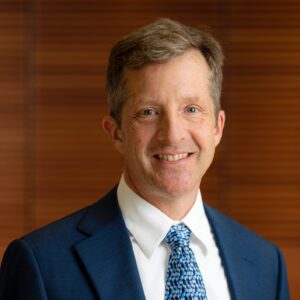
Eriksson, awarded the Steenbock Professorship in the Physical Sciences, was recently chair of the Department of Physics. He joined the UW–Madison physics faculty in 1999 and is a world-leading expert in the development of quantum information systems using solid-state quantum dot qubits.
As department chair, Eriksson promoted the Wisconsin Idea by supporting the department’s role in connecting with audiences all around the state of Wisconsin, including restarting The Wonders of Physics Traveling Show.
Eriksson received a bachelor’s degree in physics and mathematics from UW–Madison in 1992, received his PhD from Harvard University and was a postdoctoral member of technical staff at Bell Labs.
His research has focused on quantum computing, semiconductor quantum dots and nanoscience. He leads a team dedicated to developing spin qubits in gate-defined silicon quantum dots with the goal of enabling quantum computers, which manipulate information coherently, to be built using many of the materials and fabrication methods that are the foundation of modern, classical integrated circuits.
Eriksson is widely recognized for engaging collaborative partnerships with industry, government leaders and other university research institutions to tackle some of the greatest challenges in quantum information science and technology. Last year, the Eriksson group announced its partnership with Intel and HRL Laboratories as part of the LPS Qubit Collaboratory (LQC) national Quantum Information Science Research Center hosted at the Laboratory for Physical Sciences at the University of Maryland, College Park to collaborate on research in advanced computer technologies.
“I intend to use the award to explore new opportunities in silicon-based quantum computing, including new ideas for connecting qubits to each other across large distances, and the use of near-atomic-scale metamaterials to endow semiconductors with properties even better suited to quantum computing than those available today,” Eriksson says.
DARPA Researchers Highlight Application Areas for Quantum Computing
This post is modified from one originally published by DARPA
Amid efforts to explore quantum computers’ transformative potential, one foundational element remains missing from the discussion about quantum: What are the benchmarks that predict whether tomorrow’s quantum computers will be truly revolutionary? In 2021, DARPA’s Quantum Benchmarking program kicked off with the goal of reinventing the metrics critical to measuring quantum computing progress and applying scientific rigor to often unsubstantiated claims about quantum computing’s future promise.
Six months into the second phase of the program, five teams have highlighted research findings focused on specific applications where quantum computing might make outsized impact over digital supercomputers. Equally important, researchers estimated what size quantum computer is needed to achieve the desired performance and how valuable the computation would be. Pre-prints of these results are available on arxiv.org.
Three teams — University of Southern California, HRL Laboratories, and L3Harris — focused on benchmarks and applications while two other teams — Rigetti Computing and Zapata Computing — estimated required quantum computing resources. MIT Lincoln Laboratory, NASA, and Los Alamos National Laboratory provided subject matter expertise, software integration, and test and evaluation capabilities.
The HRL team includes UW–Madison physics professor Matt Otten.
To view the pre-print titles, abstracts, and links to the full text, as well as open-source software code developed by the teams, visit: Publications highlighting potential impact of quantum computing in specific applications.
Mark Saffman part of team awarded in latest round of Research Forward funding
This story was originally published by the OVCR
The Office of the Vice Chancellor for Research (OVCR) hosts the Research Forward initiative to stimulate and support highly innovative and groundbreaking research at the University of Wisconsin–Madison. The initiative is supported by the Wisconsin Alumni Research Foundation (WARF) and will provide funding for 1–2 years, depending on the needs and scope of the project.
Research Forward seeks to support collaborative, multidisciplinary, multi-investigator research projects that are high-risk, high-impact, and transformative. It seeks to fund research projects that have the potential to fundamentally transform a field of study as well as projects that require significant development prior to the submission of applications for external funding. Collaborative research proposals are welcome from within any of the four divisions (Arts & Humanities, Biological Sciences, Physical Sciences, Social Sciences), as are cross-divisional collaborations.
Physics professor Mark Saffman is part of a team awarded funding in Round 4 of the Research Forward competition for their project:
Quanta sensing for next generation quantum computing
Future quantum computers could open new scientific and engineering frontiers, impacting existential challenges like climate change. However, quantum information is delicate; it leaks with time and is prone to significant errors. These errors are exacerbated by imperfect reading and writing of quantum bits (qubits). These challenges fundamentally limit our ability to run quantum programs, and could hold back this powerful technology. Fast and accurate qubit readout, therefore, is essential for unlocking the quantum advantage. Current quantum computers use conventional cameras for reading qubits, which are inherently slow and noisy.
This research project will use quanta (single-photon) sensors for fast and accurate qubit readout. Quanta sensors detect individual photons scattered from qubits, thus enabling sensing qubits at 2-3 orders of magnitude higher speeds (few microseconds from ~10 milliseconds), thereby transforming the capabilities (speed, accuracy) of future quantum computers, and for the first time, paving the way for scalable and practical quantum computing.
Principal investigator: Mohit Gupta, associate professor of computer sciences
Co-PIs: Mark Saffman, professor of physics; Swamit Tannu, assistant professor of computer sciences; Andreas Velten, associate professor of biostatistics and medical informatics, electrical and computer engineering
MSPQC’s Preetham Tikkireddi wins second place at QED-C student poster presentation
MSPQC student Preetham Tikkireddi won second place for his poster, “Understanding security side channel attacks on multi-tenancy quantum computers,” at the plenary meeting of the Quantum Economic Development Consortium (QED-C), held March 20-21 in Evanston, IL.
Students who attended the plenary first learned best practices for presenting their research to a non-science audience, a useful skill for a cutting-edge field where investors, hiring managers, and policy makers do not necessarily have a quantum background. Then, the students implemented those skills at the judged poster session.
“[The poster session attendees] are really smart people, but they’re not quantum people, so you set them up for asking questions, and based on the questions that they’re asking, you determine how deep you want to go into your research.” Tikkireddi says. “It was a very different kind of experience, rather than just a plain research presentation to a professor or people who already know the field.”
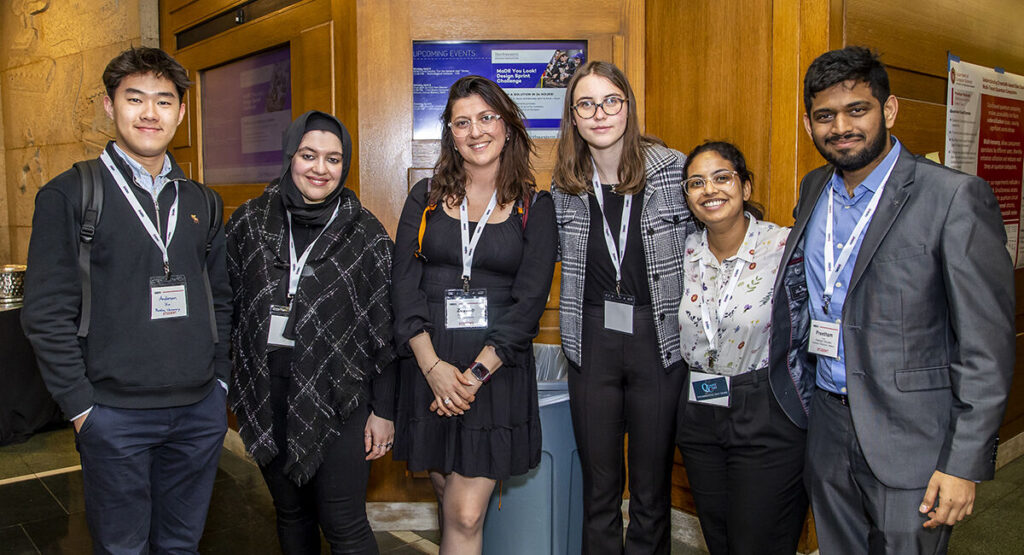
Tikkireddi’s research, conducted with computer sciences professor Swamit Tannu, looked at the potential for exploiting crosstalk when two users access the same quantum computer at the same time.
“Right now, quantum computers are really expensive, and the way we access them is by sending jobs to these quantum providers like IBM or IonQ,” Tikkireddi explains. “But the queues are really long. If you’re lucky, you can get the results back the next day.”
Quantum computing capacity is growing rapidly in the form of more and more qubits, and most jobs submitted to these long queues do not need to use all the qubits. Tikkireddi and Tannu thought that one way to increase throughput would be to allow users to share the same quantum computer, each using a subset of the qubits. But quantum computations rely on qubit entanglement, where physically separate qubits interact and share information. It was unclear if sharing a quantum computer opens users to security risks.
In his work, Tikkireddi asked if he could count C-NOTs — the gate that is used to create this entanglement — of another user. He entangled two qubits, then asked if two other qubits could “hear” what the first two were doing.
“We were able to use that to figure out how many C-NOTs the other guy is doing. That’s step one of an attack,” Tikkireddi says. “Your algorithm is your intellectual property, so you don’t want people to steal it. It’s a security problem.”
With this initial analysis identifying potential security risks amongst shared quantum computer use, Tikkireddi says providers should currently not let users share computing time, and that future research should focus on ways to mitigate these crosstalk attacks in an effort to balance efficiency with safeguarding intellectual property.
Tikkireddi credits Tannu for helping to guide his poster away from a traditional research poster and toward one more accessible to a non-science audience. He also appreciates the support from MSQPC associate director Katerina Moloni for encouraging and preparing students to take advantage of these training opportunities.
“It was a really good networking opportunity, especially for me, who is looking for a job right now,” Tikkireddi says. “I would highly recommend students to go to these kinds of events because we get a chance to interact with people in the industry.”
Bringing the Quantum to the Classical: A Hybrid Simulation of Supernova Neutrinos
By Daniel Heimsoth, Physics PhD student
Simulating quantum systems on classical computers is currently a near-impossible task, as memory and computation time requirements scale exponentially with the size of the system. Quantum computers promise to solve this scalability issue, but there is just one problem: they can’t reliably do that right now because of exorbitant amounts of noise.
So when UW–Madison physics postdoc Pooja Siwach, former undergrad Katie Harrison BS ‘23, and professor Baha Balantekin wanted to simulate neutrino evolution inside a supernova, they needed to get creative.
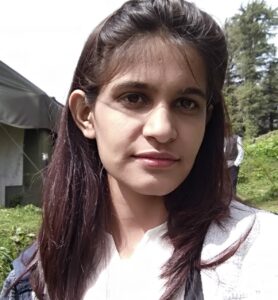
Their focus was on a phenomenon called collective neutrino oscillations, which describes a peculiar type of interaction between neutrinos. Neutrinos are unique among elementary particles in that they change type, or flavor, as they propagate through space. These oscillations between flavors are dictated by the density of neutrinos and other matter in the medium, both of which change from the core to the outer layers of a supernova. Physicists are interested in how the flavor composition of neutrinos evolve in time; this is calculated using a time evolution simulation, one of the most popular calculations currently done on quantum computers.
Ideally, researchers could calculate each interaction between every possible pair of neutrinos in the system. However, supernovae produce around 10^58 neutrinos, a literally astronomical number. “It’s really complex, it’s very hard to solve on classical computers,” Siwach says. “That’s why we are interested in quantum computing because quantum computers are a natural way to map such problems.”
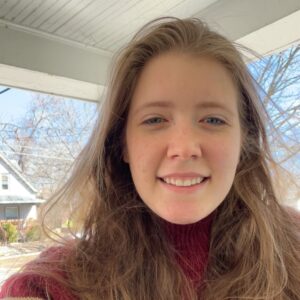
This naturalness is due to the “two-level” similarities between quantum computers and neutrino flavors. Qubits are composed of two-level states, and neutrino flavor states are approximated as two levels in most physical systems including supernovae.
In a paper published in Physical Review D in October, Siwach, Harrison, and Balantekin studied the collective oscillation problem using a quantum-assisted simulator, or QAS, which combines the benefits of the natural mapping of the system onto qubits and classical computers’ strength in solving matrix equations.
In QAS, the interactions between particles are broken down into a linear combination of products of Pauli matrices, which are the building blocks for quantum computing operations, while the state itself is split into a sum of simpler states. The quantum portion of the problem then boils down to computing products of basis states with each Pauli term in the interaction. These products are then inputted into the oscillation equations.
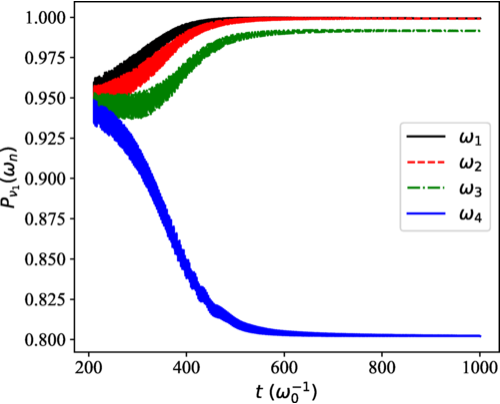
“Then we get the linear-algebraic equations to solve, and solving such equations on a quantum computer requires a lot of resources,” explains Siwach. “That part we do on classical computers.”
This approach allows researchers to use the quantum computers only once before the actual time evolution simulation is done on a classical computer, avoiding common pitfalls in quantum calculations such as error accumulation over the length of the simulation due to noisy gates. The authors showed that the QAS results for a four-neutrino system match with a pure classical calculation, showcasing the power of this approach, especially compared to a purely quantum simulation which quickly deviates from the exact solution due to accumulated errors from gates controlling two qubits at the same time.
Still, as with any current application of quantum computers, there are limitations. “There’s only so much information that we can compute in a reasonable amount of time [on quantum computers],” says Siwach. She also laments the scalability of both the QAS and full quantum simulation. “One more hurdle is scaling to a larger number of neutrinos. If we scale to five or six neutrinos, it will require more qubits and more time, because we have to reduce the time step as well.”
Harrison, who was an undergraduate physics student at UW–Madison during this project, was supported by a fellowship from the Open Quantum Initiative, a new program to expand undergrad research experiences in quantum computing and quantum information science. She enjoyed her time in the program and thinks that it benefits students looking to get involved in research in the field: “I think it’s really good for students to see what it really means to do research and to see if it’s something that you’re capable of doing or something that you’re interested in.”
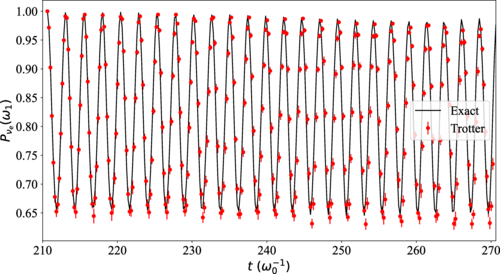
Welcome, Professor Matthew Otten!
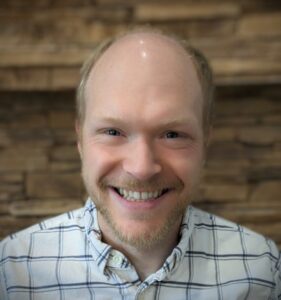
Atomic, molecular and optical and quantum theorist Matthew Otten will join the UW–Madison physics department as an assistant professor on January 3, 2024. He joins us most recently from HRL Laboratories. Prior to HRL, Otten earned his PhD from Cornell University, and then was the Maria Goeppert Mayer fellow at Argonne National Laboratory.
Please give an overview of your research.
Very generally, my goal is to make utility scale quantum computing a reality, and to get there faster than we would otherwise without my help. We have a lot of theoretical reasons to believe that quantum algorithms will be faster in certain areas; in practice, we need to know how expensive it’s going to be. It could be that a back of the envelope calculation says a quantum computer might be better, but because quantum computers are very expensive to build and have a lot of overhead, you could find that once you crunch the numbers really carefully, it turns out to cost more money or more energy or more time than just doing it on a supercomputer. In that case, it’s not worth the investment to build it, or at least not at this point. Part of my research is to understand and develop quantum algorithms and count how expensive they are. Once you do that, you can figure out the reason it’s so expensive is A and B. Then we go and we try to fix A and B, and then whack-a-mole all these bottlenecks down and eventually you go from, “It’ll never work,” to “Okay, it’ll work in twenty years.”
Another part of my research is looking at the physical qubits. These devices all have a lot of deep physics inside of them. If you just look at it from the quantum algorithm level, you might get so far. But if you dig down and try to understand the underlying physics, I think you can get further. You might be able to make devices cheaper, faster, or more performant in general. I do a lot of simulations of the underlying physics of these various types of qubits to understand what their properties are, what causes the noise that ruins computation, and what we can do to fix that noise. Through simulations on classical computers, sometimes very large ones, we come up with ways to tweak the system so that you get better performance, by coming up with better quantum algorithms and better qubits. Put those together and hopefully you get to a better quantum computer.
Once you arrive in Madison, what are one or two research projects you think your group will focus on first?
I’ll be bringing a few projects with me. The first is part of a DARPA program called Quantum Benchmarking, which I was part of while at HRL. We found really high-value computational tasks, not specifically quantum, that Boeing, which owns HRL, would like calculated: for instance, reducing corrosion. Corrosion causes planes to be grounded for maintenance, which is costly. Reducing corrosion will reduce maintenance costs and increase uptime. We’ve been developing ways to ask and answer the question, how close are today’s quantum computers to solving that problem? How big do quantum computers need to be to solve that problem? The specific task is understanding what it takes to solve such a large-scale problem, counting the quantum resources that are necessary and coming up with tests so that you could go to a quantum computer, run the tests, and hopefully be able to predict how much bigger or how much faster they would need to be to solve the problem.
Another one comes from the Wellcome Leap Foundation. We are trying to do the largest, most accurate calculation of biological objects — a molecule, string of carbon, something like this — possible on a real-life quantum computer. We’re trying to take techniques that have already been developed or develop new techniques to make circuits smaller, which means a less expensive quantum computer, and faster. That one is a competition, they gave us funding to do it, but if we complete the task better than other competitors, we get more funding to do more.
What attracted you to UW–Madison?
The strength of the science that’s happening in the physics and broader Wisconsin community is very attractive. When I visited, everyone was very nice, it’s a very collegial department. And being from St. Louis, I like the Midwest. I’ve lived in Southern California for a couple of years now and I haven’t seen snow, and that’s sad. Madison is a lovely area. Great people.
What is your favorite element and/or elementary particle?
I think it has to be silicon. Silicon is used in classical computing and potentially has use in quantum computing. And you’re carrying around silicon right now, just like everyone else.
What hobbies and interests do you have?
I have a Siberian Husky puppy and we’ll be very happy to go to Madison and do a lot of skijoring, which is cross country skiing, but the dog pulls you. I started running recently and I was jazzed up for my first half marathon and then I got COVID and I didn’t do it, so I’m still jazzed up for my first half marathon. I play a lot of board games and have a very large board game collection. And my daughter just turned one. She’s become a new hobby.